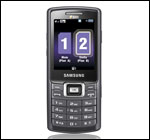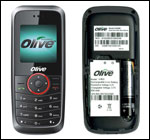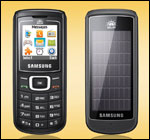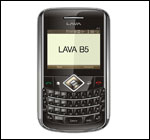Google’s Android operating software (OS) has picked up faster than Apple’s iOS in the last quarter, and has grabbed a 27 per cent share of the new user base of smartphones.
As per recent data published by The Nielsen Company, Android has shown the most significant expansion in market share among current subscribers.
Among current subscribers thinking of switching devices, the iPhone remains the most desired phone, finding loyalty with nearly 90 per cent of current iPhone users. About 21 per cent of Android users and 29 per cent of BlackBerry owners are also considering shifting to Apple.
About 71 per cent of Android’s user base is not considering switching devices, while half the BlackBerry users could potentially choose an iPhone or an Android phone as their next device.
The data also shows that smartphones now form 25 per cent of the American mobile market, up from 23 per cent in the last quarter. Nielsen predicts that smartphones will overtake feature phones in the USA market by the end of 2011.
Android a bigger hit than Apple among new users in USA: study
TTSL launches new tariff plan
Tata Teleservices has announced the launch of a new tariff plan called ‘Ulta Plan’. The plan offers local calls at 50 paisa per minute and STD calls at 30 paisa per minute.
The plan is available for Tata Indicom users which is the CDMA brand of TTSL. The offer will be available for existing subscribers along with potential ones.
Vineet Bhatia, Regional Head (North-Central), Tata Teleservices Limited, said, “We expect a jump of 30 per cent in our subscriber base with this plan. The results will start showing once the TVC is launched.”
He added that the plan currently available for pre paid users will be launched for post paid users as well starting tomorrow. The company expects large number of subscribers to from migrant population.
Ulta Plan can be clubbed with other existing plans from TTSL as well.
Potential pre-paid subscribers can avail of the benefits of ULTA PLAN by recharging their number with First Recharge Vouchers available at an MRP of Rs 58 and Rs 104, wherein they can make STD calls at just 30 paise per minute for a period of three months from the very date of recharge for the first 600 minutes per month—after this usage, STD calls will be charged at 50 paise per minute. The vouchers come with free lifetime incoming call validity and provide talk-time worth Rs 32.58 and 74.29, respectively. Furthermore, SMSs would be offered at a special price of 50 paise for both national and local messages.
Existing subscribers can also avail of the benefit of STD calling at just 30 paise per minute for the first 600 minutes across India by recharging with other ‘ULTA Plan Special Tariff Vouchers’ available at Rs 26 in the Delhi, Punjab, Himachal Pradesh, Haryana, Kolkata, Mumbai and Maharashtra & Goa Circles—and at Rs 16 in Jammu & Kashmir, UP East, MPCG, RoWB, Orissa, Assam, North-East, Karnataka, Tamil Nadu, Kerala, Andhra Pradesh, Bihar, UP West, Rajasthan and Gujarat—with a validity of 30 days. For local calls, existing subscribers will be charged 50 paise per minute.
Virgin Mobile offers free music download
Virgin Mobile has announced a new music service that allows users to access music library across all genres for free.
The Music Unlimited service offers customers to use any form of music as a caller ringback tone, ringtone or download full songs onto their mobile phones, without any charges.
The subscribers can download content from a music library comprising over 1.5 lakh songs across various genres, ranging from Bollywood, western rock, pop, Bhangra, Indi-pop, Bengali, Tamil, Telugu, Malayalam etc.
To avail this service, customers have to call at 586865, for which they will be charged at 10 paisa per second.
Handsets custom made for India
With more than a billion handsets sold in a year, the Indian mobile handset market is brimming with choices. Handsets market is one of the most dynamic segments of the Indian Telecom industry where each phone launched is a celebration in itself.
Today, there are more than three dozen handsets manufacturers in the Indian market offering a choice of more than 500 handsets to the customers. With the competition so intense, the need to add more and more features and innovations in a device is of absolute importance.
To lure the attention of the users to their product, the handset manufacturers are going the Indian way i.e. they are coming up with features specially incorporated for the Indian masses. These features include Indian calendar, Regional language support, long battery life etc.
DESI TWIST The StartAlthough Indian brands have been most active when it comes to introducing features specific to Indian markets, Nokia can be credited with starting it all.
The StartAlthough Indian brands have been most active when it comes to introducing features specific to Indian markets, Nokia can be credited with starting it all.
In 2003, Nokia introduced its first ‘made for India’ handset. Taking into account the humid and dusty climate India, Nokia 1100, came with anti-slip sides providing a better grip. The phone, which became an instant hit and is still one of the best-selling models from the company, and also came with a dust resistant keypad and a torch.
Since then the baton has largely been carried forward by the Indian brands trying to create a niche for themselves in this market. Here is what came out of the handset manufacturer’s Indian thinking cap!
Regional language supportIndia is a country of varied cultures and languages. Almost 29 different languages are spoken in the country and not everybody could read or write English. Hence, to expand the mobile phone penetration handset manufacturers launched devices with support for regional languages as well.
Handsets now come with support for Indian languages such as Hindi, Tamil, Marathi etc. Downloadable App for support for all Indian languages as also available.
Infact, regional language support is seen an an important step towards taking value added services to the masses. Dual SIMThe race in this segment was spearheaded by Spice Mobiles by launching a dual SIM handset in 2008 and since then this segment has grown leaps and bounds.
Dual SIMThe race in this segment was spearheaded by Spice Mobiles by launching a dual SIM handset in 2008 and since then this segment has grown leaps and bounds.
Jaideep Ghosh, executive director, KPMG had earlier told Telecom Yatra, “Till about 18 months earlier, there were only three companies selling dual SIM phones – Spice, Micromax and Intex Technologies. Now, there are about 40 brands in the market offering these.”
International brands too followed the footsteps. First came in Samsung and then LG and now recently Nokia too announced its dual SIM handset.
The market now is not just limited to dual SIM handsets but already making inroads for triple SIM devices. GeePee, Intex and Olive are some of the manufacturers offering triple SIM handsets. Battery lifeAs everybody would agree, electricity is a major problem in India. Hence, if asked about performance, good battery life features high up on the users’ priority list.
Battery lifeAs everybody would agree, electricity is a major problem in India. Hence, if asked about performance, good battery life features high up on the users’ priority list.
People face problems charging cell phones in cities because of frequent power cuts. The situation in smaller towns is even worse, which explains the advent of phones with phones with longer battery life.
Devices offering battery backup up to 30 days have become common place. Infact, recently Zen Mobiles launched M25 with a 2500 mAh battery which promises 72 hours of talktime.
Deepesh Gupta, MD, Zen Mobiles feel that the phone would be useful for people living in rural areas where long power failures are a common feature. Also good battery back is required because concepts like mobile charging points at public places and car charging are still not very popular. AAA battery supportTo further deal with the inconsistent power supply in India, Olive communications, announced a hybrid dual powered cell phones earlier this march.
AAA battery supportTo further deal with the inconsistent power supply in India, Olive communications, announced a hybrid dual powered cell phones earlier this march.
This device, FrvrOn, comes with a provision for inserting an AAA battery besides the conventional Lithium-ion battery.
Solar powered phoneThis was another innovative means by which the handset manufacturers planned to tackle the problem of erratic power supply in India. The first step in this direction was initiated by Samsung who launched Solar Guru E1107, the first solar powered mobile phone in India. This device uses the sun’s energy to charge. However the phone, offering 5-10 minutes of Talk time on charging for an hour under the sun, didn’t strike the right cord with the users.
This device uses the sun’s energy to charge. However the phone, offering 5-10 minutes of Talk time on charging for an hour under the sun, didn’t strike the right cord with the users.
Recently, Vodafone also came up with its version of solar paneled device, the VF 247. This device comes with an extended solar powered battery i.e. Sun Boost, an inbuilt hardware and software that ensures that the phone charges in a room, as well as under normal daylight.
This device is fully charged if left for eight hours in the sun giving a week of stand by time and 4 hours of talk time.
TorchLED flash light has been a hit amongst the masses. The use of flashlight is not limited to camera phones but have become more popular as being used as torch light. ALPHA keypadThis relatively new and innovative concept has been introduced by Lava in their latest handsets B2 and B5. The alpha keypad is neither traditional multi-tap nor QWERTY, instead the keys are arranged in ABCD order.
ALPHA keypadThis relatively new and innovative concept has been introduced by Lava in their latest handsets B2 and B5. The alpha keypad is neither traditional multi-tap nor QWERTY, instead the keys are arranged in ABCD order.
This would be especially helpful for users wanting an enterprise device but aren’t familiar with the concept of QWERTY keyboard as used in a computer.
Airtel to include location awareness in all it’s VAS offerings
Airtel plans to take LBS to the next level by incorporating location awareness in all it’s VAS offerings. Rakesh Mahajan, VP Marketing Business Head, VAS and Incubation Mobile Services, said on the sidelines of FICCI round table on LBS.
He also said that the company is looking for innovative ideas to launch VAS services. According to him prime requirements for new VAS services are simplicity, usablity and fun.
The FICCI roundtable on LBS was organised to discuss the oppertunities and challenges in offering Location based services.
Rakesh Mahajan said that location awareness is very important for every VAS service and that LBS can be offered as standalone service or can be clubbed with other services without being marketed as such.
Rakesh Trivedi, General Manager of TTSL said “LBS has several business cases and is a gold mine waiting to be tapped. We are currently looking at offering business to business services. These include tracking services and asset management services”.
He added that business to customer service is another big area for TTSL where we are working to provide very innovative and usable services.
Rohan Verma, Director MapmyIndia said “the lack of LBS take off is more due to supply side constraint rather than demand side”. He added that the service providers needs to show more intent to tap LBS opportunity.
Yogesh Bijlani, Country head, India and GM, Telenity said that they are in talks with Idea cellular and BSNL to launch friend finder type applications, which enables people to stay connected to friends and family with information on their current location.
He said that BSNL is working on a bouquet of services with Telenity, which it plans to launch shortly.
Uninor launches GPRS service for Kolkata, West Bengal
Uninor has announced the launch of data services on GPRS for its prepaid subscribers across Kolkata and West Bengal, including Sikkim. With this, GPRS service is now available to prepaid customers in all 13 circles where Uninor is operating.
The data services will be available through a base plan with a tariff of 10 paisa per 10KB. Customers will also be able to access the service through two products – myconnect 9 priced at Rs 9, and myconnect 90 priced at Rs 90.
For both plans, usage beyond free data will be charged at 10 paisa per 10KB.
Akash Das, executive vice president, Kolkata hub, “Our data services now debut in the high potential metro circles and regions with high data consumption. Uninor now offers a complete prepaid offering – with good quality voice and high speed data.”
Uninor holds a pan-India licence to offer mobile telephony services in each of India’s 22 circles. At present, Uninor services are available in the 13 circles of UP (West), UP (East), Bihar, Orissa, Kolkata, West Bengal, Tamil Nadu, Karnataka, Kerala, Andhra Pradesh, Mumbai, Maharashtra and Gujarat.
Mauj Mobile partners with music labels
Mumbai-based Mauj Mobile, a part of People Group, has announced partnerships with various leading music labels in order to strengthen company’s music content protfolio.
The partnership gives Mauj exclusivity to distribute its content over all mobile channels.
The content and mobile marketing services provider has tied up with INRECO, Hindusthan, Manorama Music, JS Audio, Vani and Audio Tracs. The combined consortium of music labels gives Mauj access to significant market share of catalogue music and movie content across Tamil, Malayalam, Punjabi, Marathi and Bengali speaking markets.
A repository of approximately 15,000 tracks of music and interactive content of films in the form of Ringtones, Graphics, Video Clips, CRBTS, Themes, Animations and Logos will now be available to Mauj users.
With the partnership the company is expecting to add 40-50 new tracks every month across various genres including retro, classical and devotional songs.
Nokia gearing up for festive season
To capitalise on the Onam, Kerala’s biggest festival, Nokia India has announced an exciting cash back offer for its consumers in Kerala. Nokia consumers have the opportunity to get cash-back up to Rs one lakh on purchase of Nokia devices this festive season.
As part of the promotion, on purchase of every Nokia handset, consumers in Kerala are entitled to a scratch-card which will have either a cash back offer or a 10% discount on purchase of mobile accessories. The cash back offer ranges from Rs 51 to Rs 100,000.
According to T S Sridhar, General Manager-South, Nokia India, “Kerala is an important region for us and we have created this offer for our valued consumers in keeping with the spirit of the festival. We want to strengthen our connect with them by sharing their joy and enthusiasm in celebrating Onam, the harvest festival, which is believed to usher in a season of prosperity and plenty.”
Airfone launches AF22
Delhi-based handset manufacturer Airfone, has announced the launch of AF222 DUO.
The phone is a dual SIM device and supports working of two GSM devices. The handset manufacturer has added features such as dual battery, dual memory, dual speakers, dual camera and dual Memory card slot to the device.
Dual battery feature allows users to switch on to the inbuilt internal battery for further use, incase the external battery expires.
Also the phone comes with two cameras. The main camera supports up to 2.0- megapixels while front camera is of 0.3-megapixels.
Other features include MP3, Video Player, FM Radio, Bluetooth and GPRS/WAP.
The handset will come in four colours and will be available for Rs 3,499.
Vishal Chitkara, director, Airfone India Ltd, said “This phone targeted at metros and Tier I cities is an important step for us to strengthen our position in these cities”.
MTNL to start video mail service
The service works the same way as a voice mail, with the added benefit of video.
MTNL will soon launch video mail services for its customers in Delhi and Mumbai. The services will enable users to leave a video message in case the person called is not available.
MTNL will use a Tanla Solutions 3G platform to offer this service.
MTNL is the first Indian mobile operator to launch 3G services in India.
Tanla wants to capitalise on the 3G value added services space. The company already provides 3G services to networks outside India such as in the United Kingdom and Sri Lanka.
Tanla’s 3G VAS platform enables a number of video based interactive applications such as interactive video response portals, video chat, video SMS, video alerts and video mailing. This enables mobile operators and service providers to enhance portal offerings with feature rich, personalised video interactivity.

